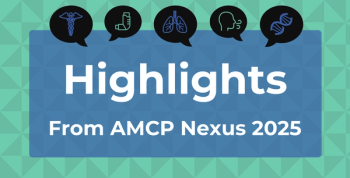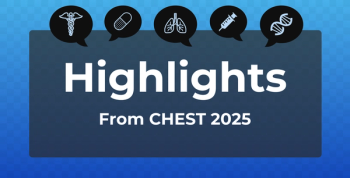
DNA Index Most Effectively Identifies Patients With Hyperdiploid ALL
The measure of total DNA in leukemic cells as defined by a DNA index outperformed other criteria for identifying patients with hyperdiploid acute lymphoblastic leukemia (ALL) and favorable prognosis.
Among several definitions, the measure of total DNA in leukemic cells defined by a DNA index (DI) showed the most efficacy in identifying patients with hyperdiploid acute lymphoblastic
ALL is the most common form of childhood cancer, and ALL with high hyperdiploidy—which refers to cells containing more chromosomes than usual—is the most common subgroup. ALL with hyperdiploidy carries a favorable prognosis relative to other subtypes, but hyperdiploidy has a varied biology, and different subgroups have shown different treatment responses.
“Although generally associated with excellent survival with most patients treated on a low-intensity regimen, there is a wide heterogeneity of biology across hyperdiploidy, with disparate treatment response and outcomes among subgroups,” the authors wrote. “Although higher modal numbers of chromosomes are generally associated with a better prognosis, the exact chromosomal modal group with the best prognosis remains unclear.”
Researchers at St. Jude Children's Research Hospital aimed to determine which of several definitions of hyperdiploidy in childhood ALL identifies patients with the best prognosis whose treatment could be deintensified. The relationship between hyperdiploidy and drug sensitivities was also explored in the study to see if these sensitivities happen in a chromosome-specific way.
“Hyperdiploidy is not monolithic. It is essential to identify the individual chromosome gains to better understand its effects. The gain of specific chromosomes can result in varying drug sensitivity and resistance,” said co–corresponding author Jun J. Yang, PhD, departments of Pharmacy and Pharmaceutical Sciences and Oncology at St. Jude Children's Research Hospital, in a press release.2
The study evaluated 6 definitions of hyperdiploid ALL used by various cooperative study groups:
- chromosome number 51-67 (Chr51-67)
- DI (DI1.16-1.6)
- United Kingdom ALL study group low-risk hyperdiploid, either trisomy of chromosomes 17 and 18 or +17 or +18 in the absence of +5 and +20
- single trisomy of chromosome 18
- double trisomy of chromosomes 4 and 10
- triple trisomy (TT) of chromosomes 4, 10, and 17
A total of 1096 patients were analyzed in the study, 915 of whom had B-cell ALL (B-ALL). The researchers also performed ex vivo pharmacotyping on 634 patients, 526 of whom had B-ALL, to investigate the relationship between hyperdiploidy and drug sensitivities.
A univariate analysis found that the most favorable criterion for event-free survival (EFS) and cumulative incidence of relapse (CIR) was TT when compared with other B-ALL cases, with a 10-year EFS of 97.3% vs 86.8% (P = .0003) and 10-year CIR of 1.4% vs 8.8% (P = .002).
The DI was the most favorable criterion in a multivariable analysis that factored in patient numbers using the Akaike information criterion (AIC) to determine which model was the best fit for the data set. It showed the best AIC for EFS (HR, 0.45; 95% CI, 0.23-0.88) and CIR (HR, 0.45; 95% CI, 0.21-0.99). Overall survival was assessed as a secondary end point, and the researchers noted similar trends.
“Taken together, DI was consistently the most significant prognostic factor in multivariable analysis; by contrast, Chr51-67, trisomy 18, and UK-ALL low-risk hyperdiploid group did not remain statistically significant after adjusting for clinical prognostic factors,” the authors wrote.
Pharmacotyping showed that patients with hyperdiploid ALL and those in subgroups with favorable prognostic factors showed sensitivity to asparaginase and mercaptopurine. Trisomy of chromosomes 16 and 17 was associated with asparaginase sensitivity, and gains of chromosomes 14 and 17 were linked to mercaptopurine sensitivity.
“Hyperdiploidy definitions have historically been derived from the retrospective studies of previous protocols,” said co–corresponding author Ching-Hon Pui, MD, departments of Oncology, Pathology, and Global Pediatric Medicine at St. Jude Children's Research Hospital.2 “By comprehensively comparing 6 different classification methods in the same patient cohort, we show that a simple system, such as the DNA index, is optimal for stratifying patients with a good prognosis. This approach remains applicable in modern studies with contemporary risk-directed therapies.”
The authors concluded that the findings provide a foundation for determining the optimal definition for hyperdiploidy and align with increasing evidence that identifying specific prognostic chromosomes and those associated with drug resistance is key in this population.
References
1. Lee SHR, Ashcraft E, Yang W, et al. Prognostic and pharmacotypic heterogeneity of hyperdiploidy in childhood ALL. J Clin Oncol. Published online September 20, 2023. doi:10.1200/JCO.23.00880
2. St. Jude refines definition and hones treatment of hyperdiploid leukemia. News release. St. Jude Children’s Research Hospital. September 20, 2023. Accessed September 22, 2023. https://www.stjude.org/media-resources/news-releases/2023-medicine-science-news/st-jude-refines-definition-and-hones-treatment-of-hyperdiploid-leukemia.html
Newsletter
Stay ahead of policy, cost, and value—subscribe to AJMC for expert insights at the intersection of clinical care and health economics.













































